The origins of the Babri Masjid-Ram Janmabhoomi dispute trace back centuries, rooted in conflicting narratives between Hindu and Muslim communities regarding the site in Ayodhya. Hindus believe it to be the birthplace of Lord Ram and assert that a temple originally stood there before the mosque was built.
The issue gained momentum in the 1980s when various right-wing Hindu groups, including the Vishva Hindu Parishad (VHP) and the Rashtriya Swayamsevak Sangh (RSS), launched campaigns advocating for the construction of a Ram temple at the disputed site.
Commencing from Somnath in Gujarat on September 25, 1990, BJP leader L K Advani’s Ram Rath Yatra emerged as a defining moment in Indian politics.
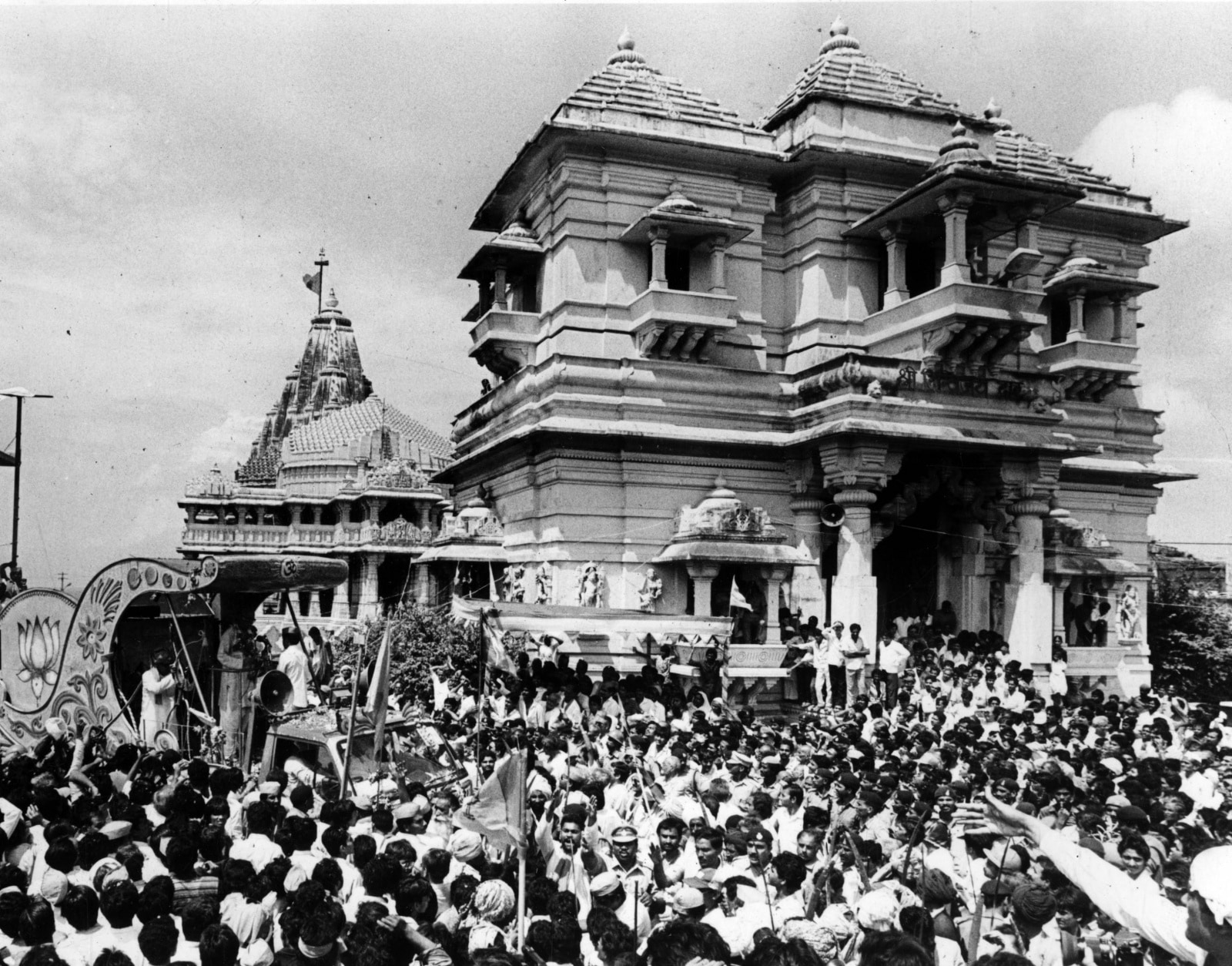 L K Advani at Somnath Temple in Gujarat before the yatra. (Express Archive)
L K Advani at Somnath Temple in Gujarat before the yatra. (Express Archive)
The yatra passed through 16 states during its journey and was to finally end in Ayodhya. It was a political campaign that aimed to garner support for the construction of a Ram temple at the disputed site in Ayodhya.
Advani’s choice of a ‘rath’ or a chariot as the mode of travel symbolized Lord Ram’s journey as depicted in the Hindu epic Ramayana. He intended to perform a symbolic “shilanyas” (foundation stone-laying) ceremony for the proposed Ram temple.
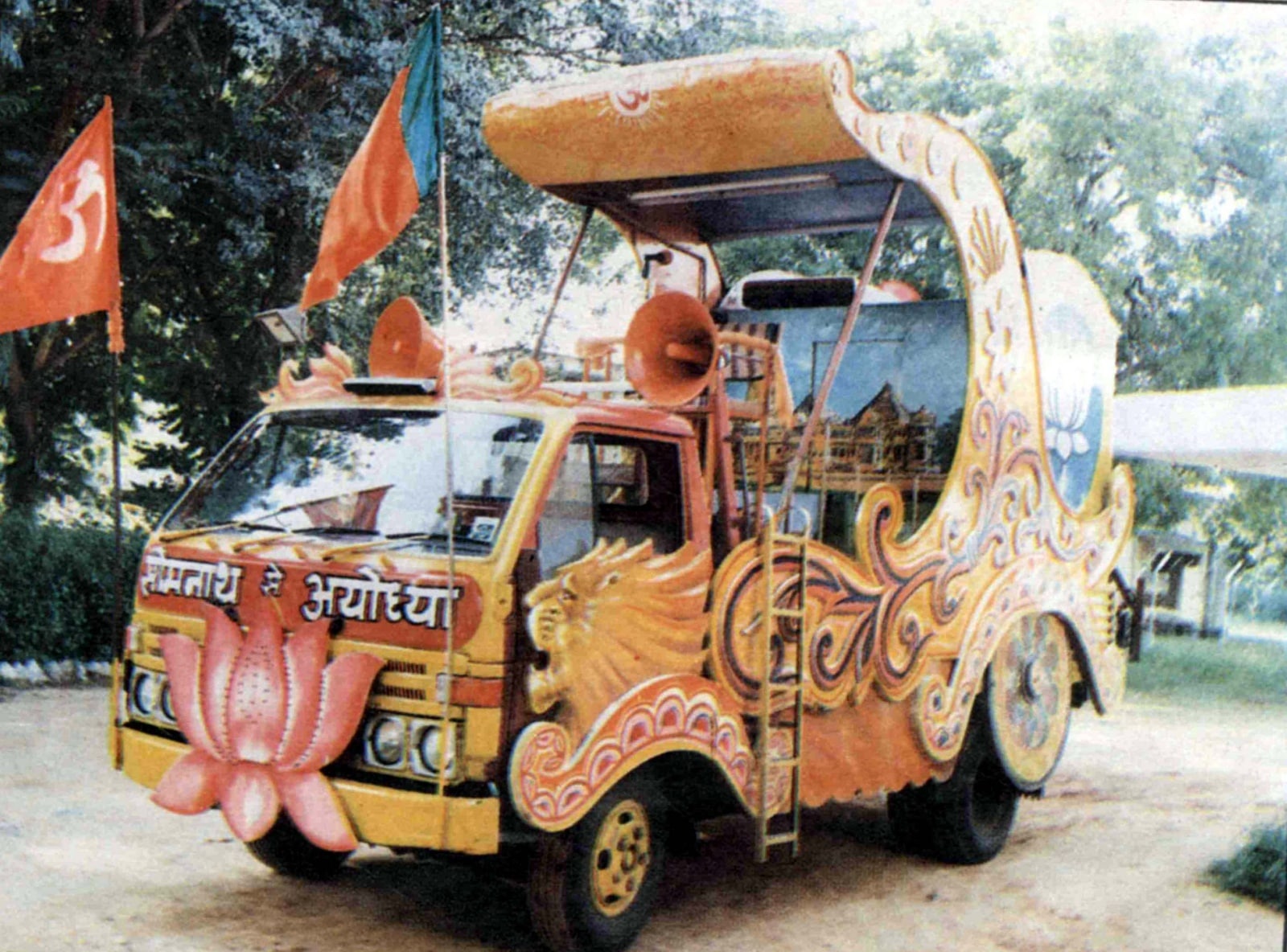 The chariot used by Advani for his Somnath to Ayodhya Rath Yatra to enlist support for a grand Ram temple in Ayodhya. (Express Archive)
The chariot used by Advani for his Somnath to Ayodhya Rath Yatra to enlist support for a grand Ram temple in Ayodhya. (Express Archive)
Also, the year 1990 witnessed a pivotal moment in the political landscape of India with Prime Minister V P Singh’s announcement to implement the Mandal Commission’s recommendations, a move aimed at providing reservations to Other Backward Classes (OBCs).
This decision posed a threat to the cohesive Hindu unity forged by the Ram Janmabhoomi movement. While the RSS convened a meeting to garner support for the VHP’s temple inauguration event in Ayodhya, Advani, sensing the potential announced the Rath Yatra from Somnath to Ayodhya, symbolically invoking historical memories to fuel the demand for a Ram temple. The yatra gained immense traction, catapulting Advani into the national political spotlight while triggering riots in certain areas.
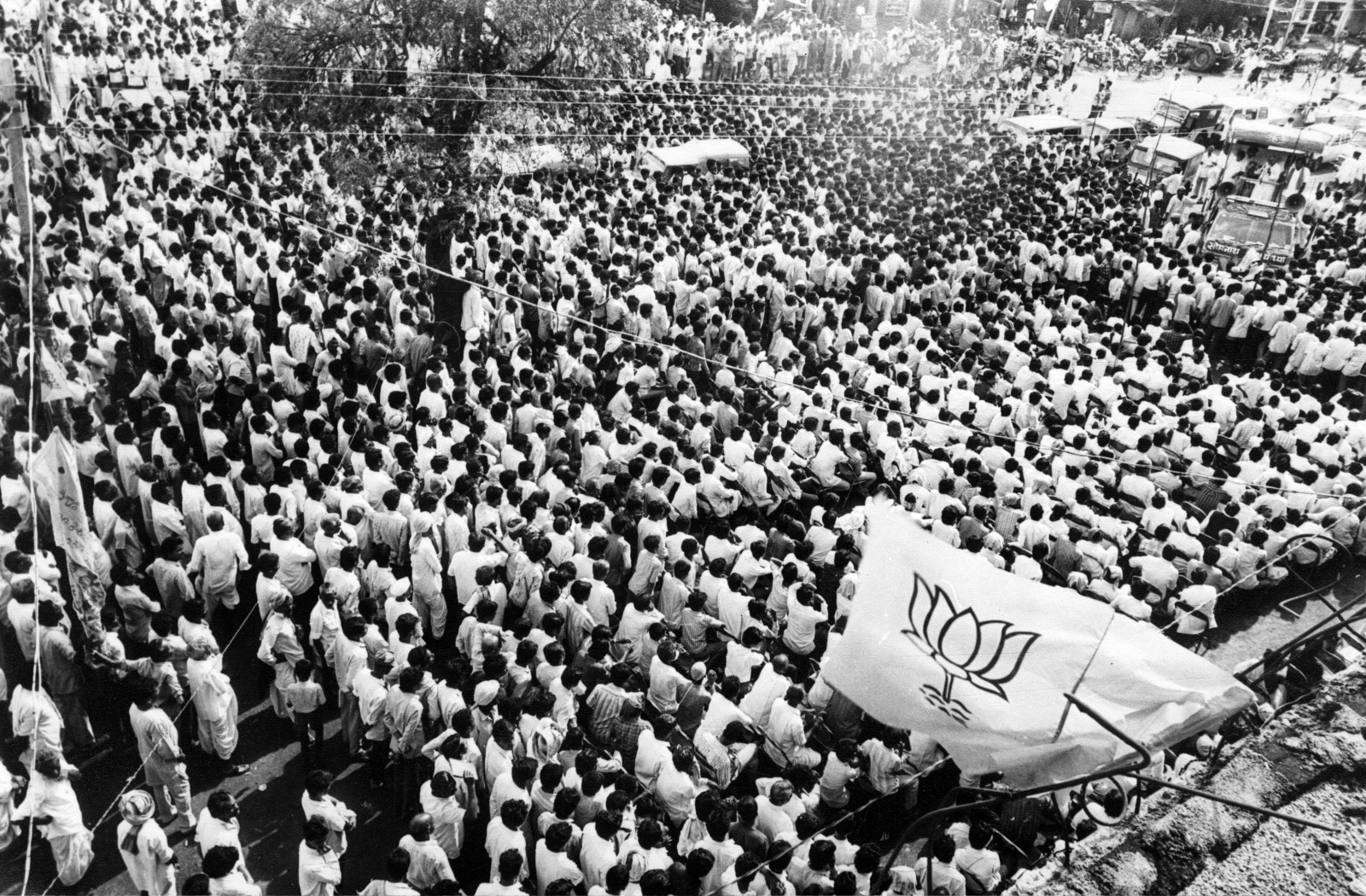 The crowds during Advani’s Somnath to Ayodhya Rath Yatra. (Express Archive)
The crowds during Advani’s Somnath to Ayodhya Rath Yatra. (Express Archive)
 Advani’s choice of a ‘rath’ or a chariot as the mode of travel symbolized Lord Ram’s journey as depicted in the Hindu epic Ramayana (Express Archive)
Advani’s choice of a ‘rath’ or a chariot as the mode of travel symbolized Lord Ram’s journey as depicted in the Hindu epic Ramayana (Express Archive)
The yatra came to an end with the government of then Bihar CM Lalu Prasad arresting Advani on the night of October 22, 1990, and flying him to a guest house in Dumka, now in Jharkhand. The arrest then led to the withdrawal of the BJP’s support from the VP Singh government at the Centre.
With Advani’s second consecutive term as BJP president coming to a close, Murli Manohar Joshi was chosen as his replacement as party chief in February 1991. In the Lok Sabha polls held soon afterwards, the BJP’s tally jumped from 85 to 120 and its vote share rose from 11% to 20%.
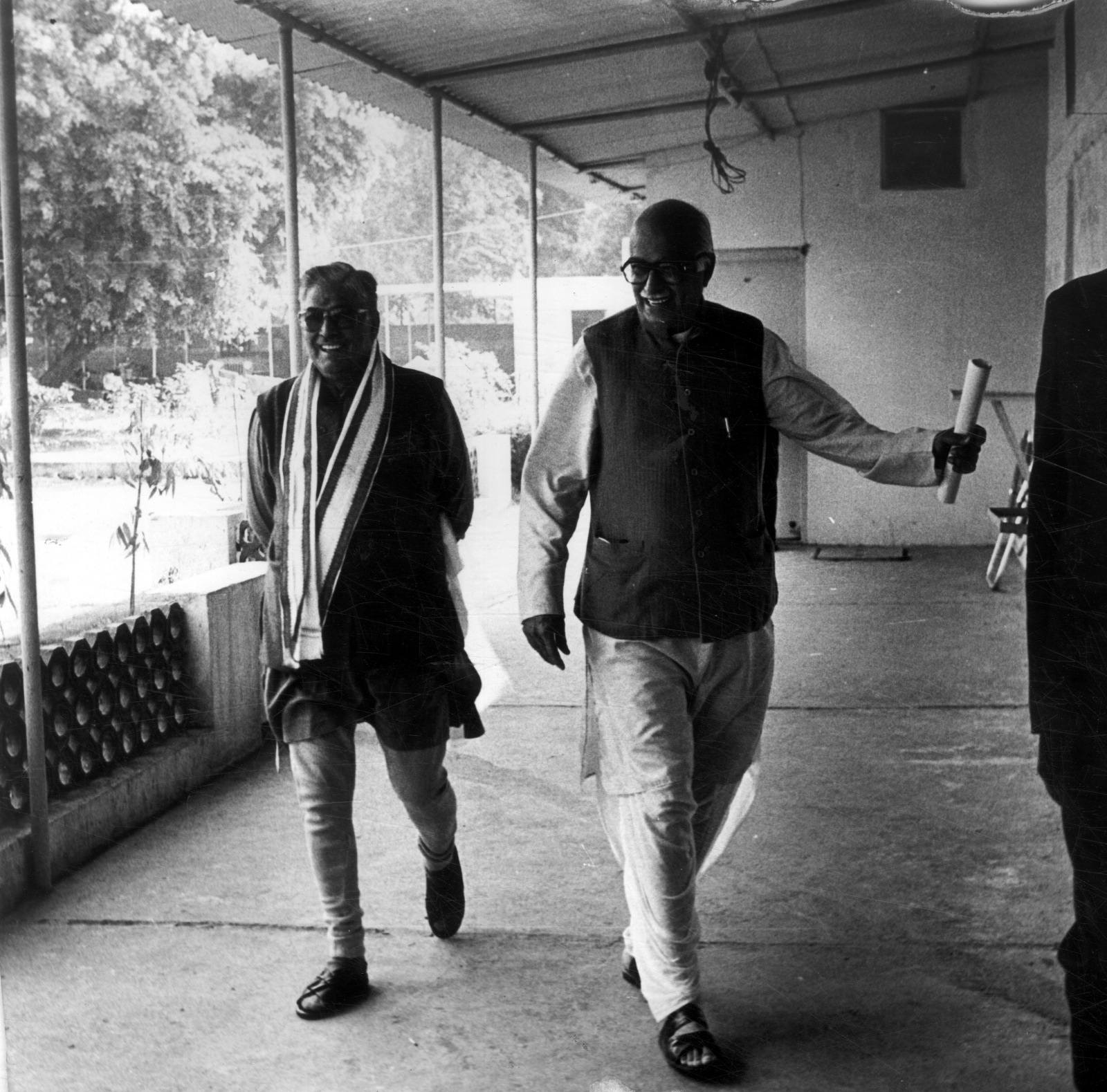 L K Advani and Murli Manohar Joshi on the way to address a press conference in New Delhi. (Express Archive)
L K Advani and Murli Manohar Joshi on the way to address a press conference in New Delhi. (Express Archive)
Kalyan Singh’s appointment as UP CM in 1991 and the collective pledge for temple construction in Ayodhya solidified the party’s stance on the disputed site.
The turning point arrived on October 30, 1992, with the VHP’s announcement to commence temple construction near the mosque, in contravention of a Supreme Court order.
The situation reached a boiling point on December 6, 1992, when a large gathering of karsevaks (Hindu volunteers) assembled at the disputed site in Ayodhya. Amidst escalating emotions and heightened fervor, the situation turned volatile. Despite assurances from political leaders and law enforcement, the crowd breached the security cordon and demolished the Babri Masjid.
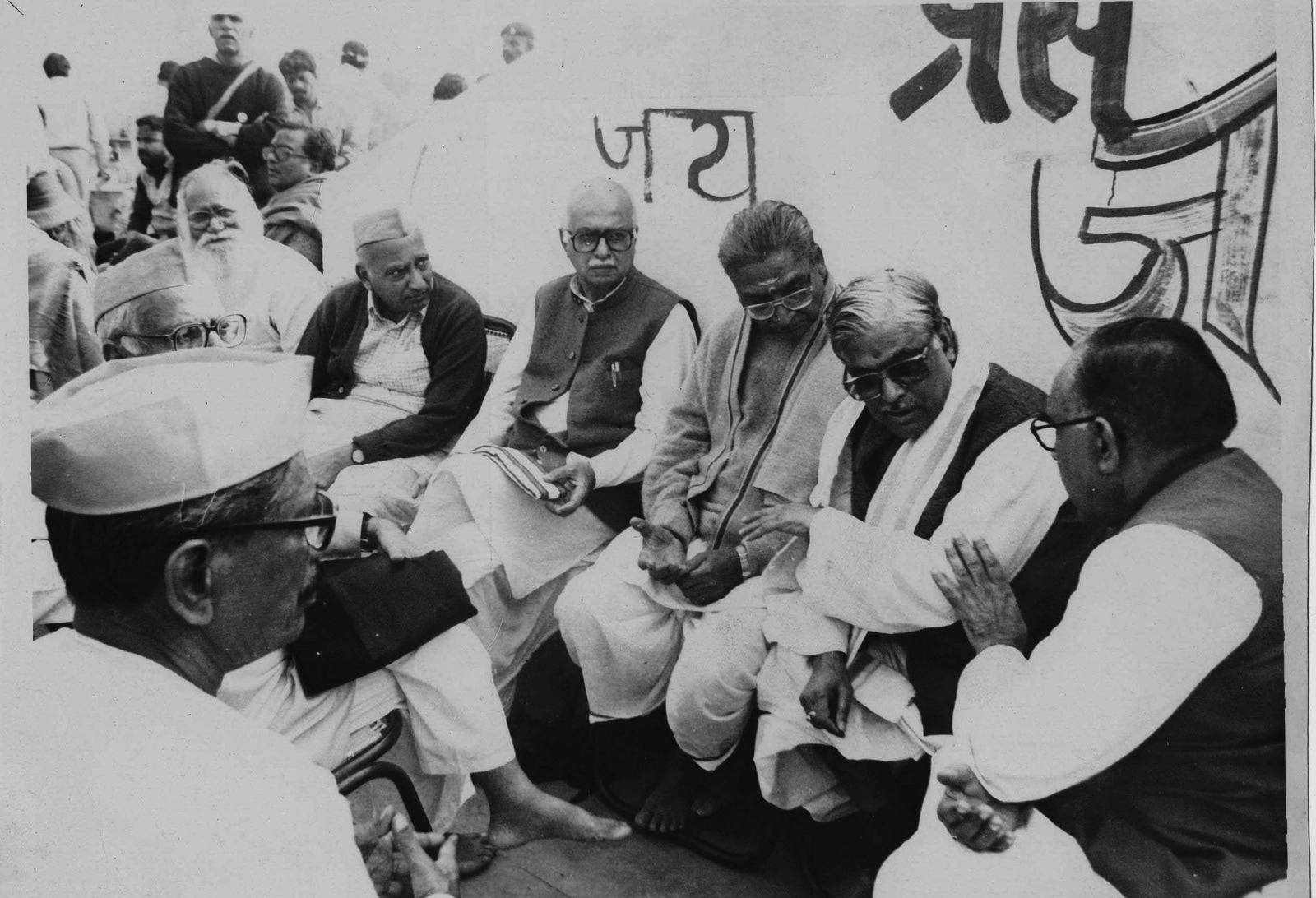 BJP leaders LK Advani, Murli Manohar Joshi and others during a meeting after the kar sevaks started the demolition of Babri Masjid. (Express Archive)
BJP leaders LK Advani, Murli Manohar Joshi and others during a meeting after the kar sevaks started the demolition of Babri Masjid. (Express Archive)
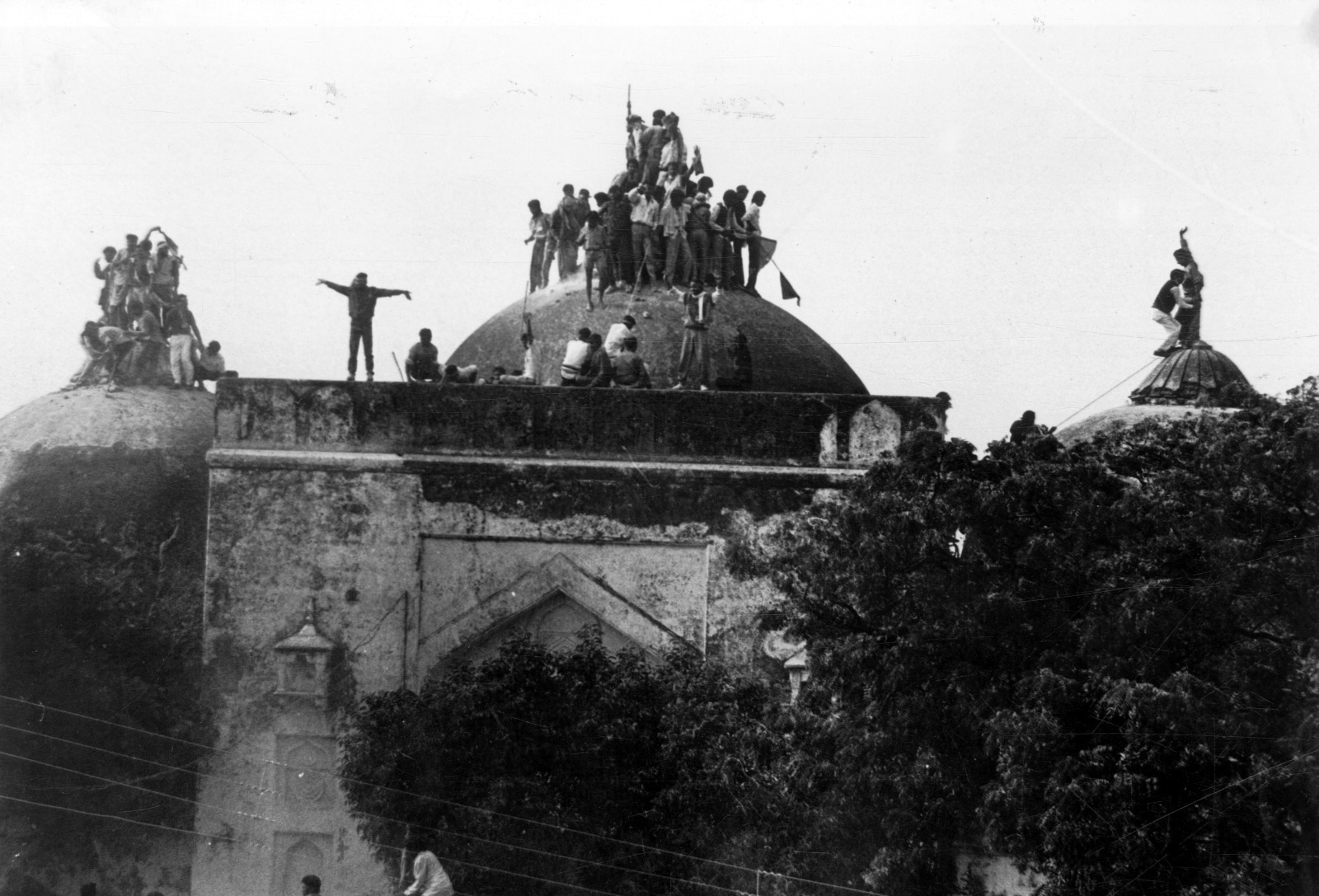 Kar sevaks atop the Babri masjid shortly before it was demolished on December 6, 1992. (Express Archive)
Kar sevaks atop the Babri masjid shortly before it was demolished on December 6, 1992. (Express Archive)
 Kar Sevak trying to run over the Babri Masjid. (Express Archive)
Kar Sevak trying to run over the Babri Masjid. (Express Archive)
The demolition sparked immediate outrage and triggered widespread violence and riots between Hindu and Muslim communities across India. President’s Rule was imposed in Uttar Pradesh.
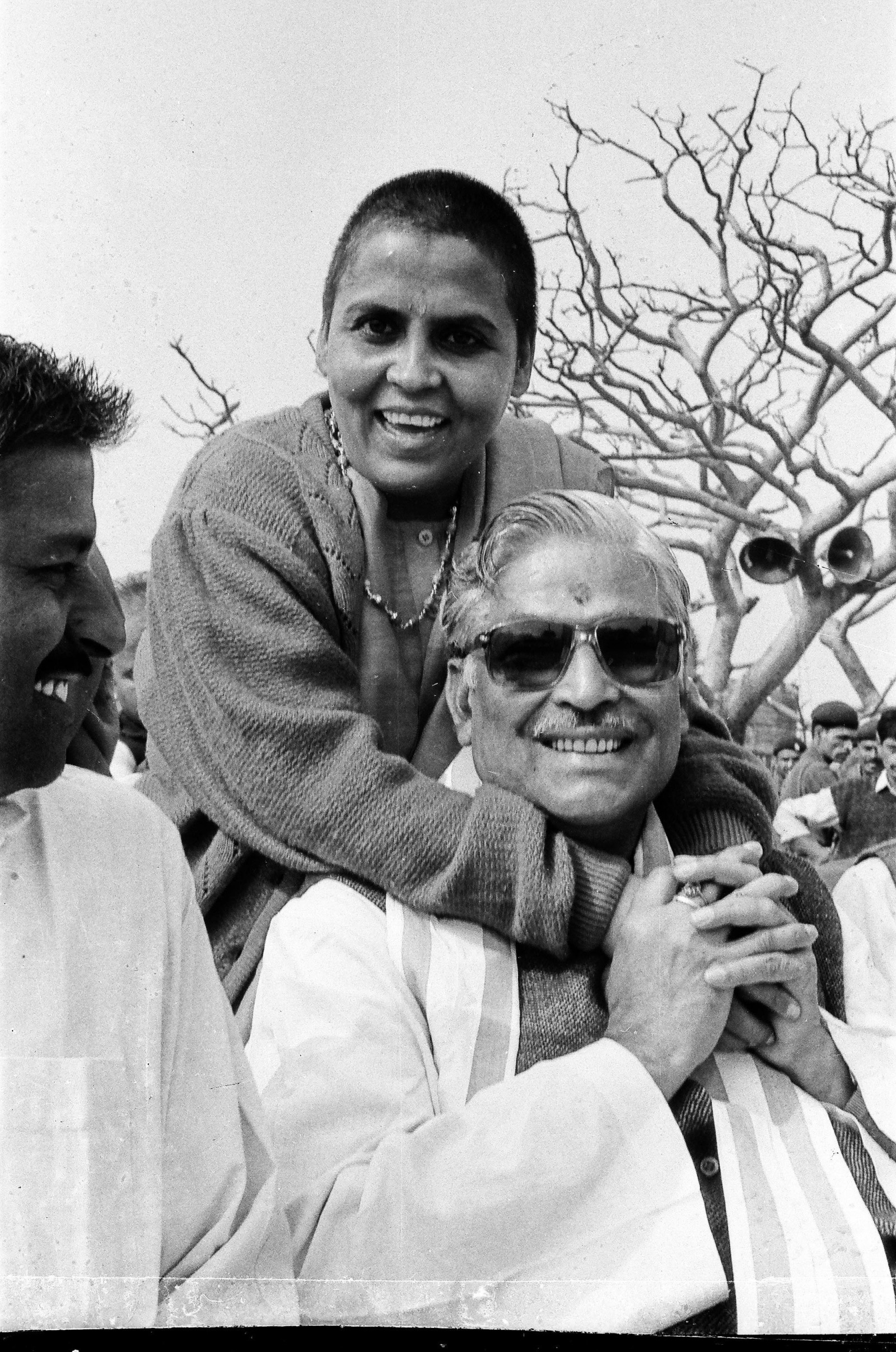 BJP leaders Uma Bharti and Joshi in Ayodhya on December 6, 1992. (Express Archive)
BJP leaders Uma Bharti and Joshi in Ayodhya on December 6, 1992. (Express Archive)
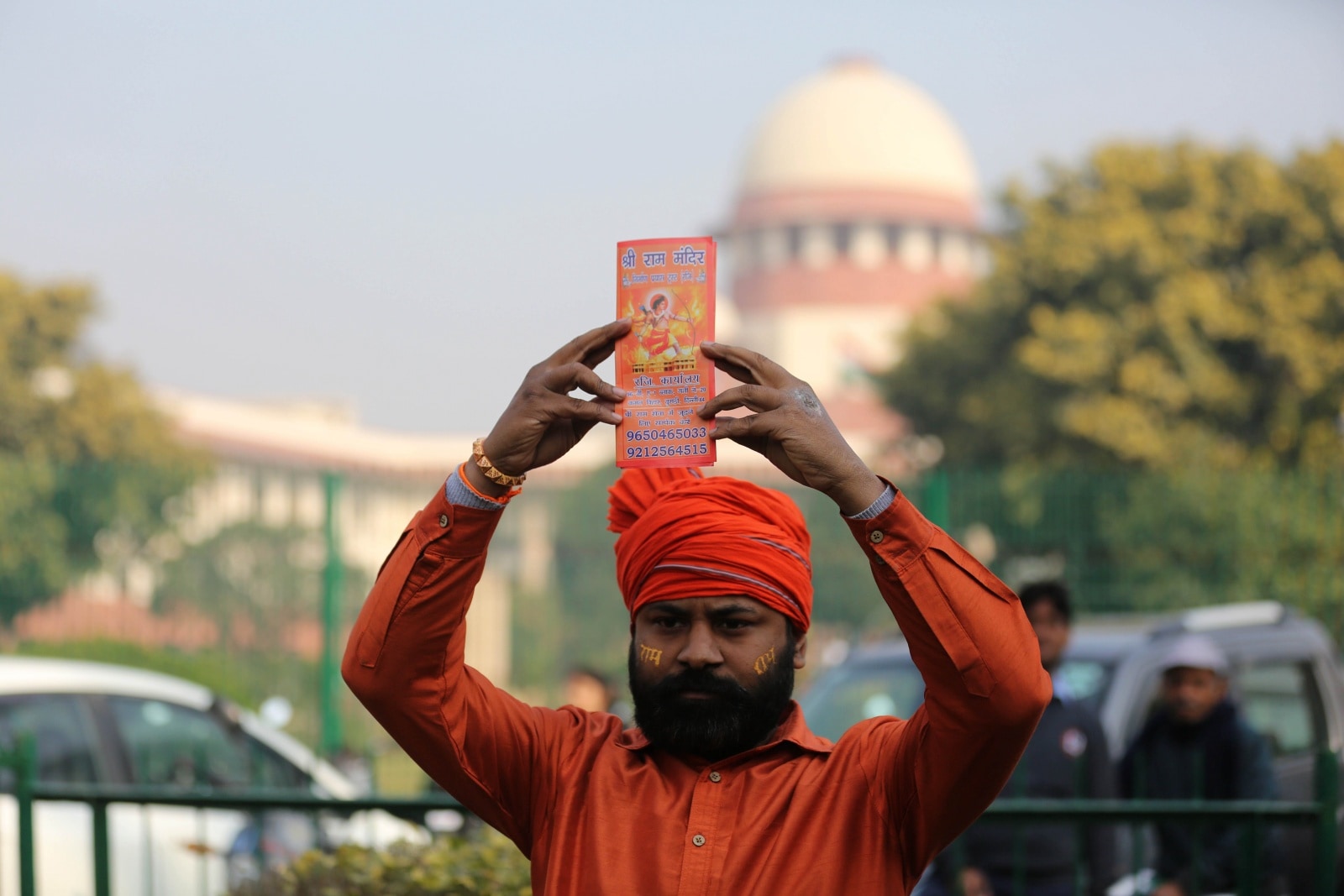 Supporters of the Temple at the Supreme Court in New Delhi, where the heairng in the Ayodhya Babri case was underway. (Express Photo by Tashi Tobgyal)
Supporters of the Temple at the Supreme Court in New Delhi, where the heairng in the Ayodhya Babri case was underway. (Express Photo by Tashi Tobgyal)
Delivering its verdict in the Ram Janmabhoomi-Babri Masjid land dispute case in Ayodhya, the Supreme Court in 2019 unanimously handed over the disputed land to the Ram Temple trust and said that the Sunni Wakf Board will be granted 5 acres of land in “suitable, prominent place in Ayodhya”.






